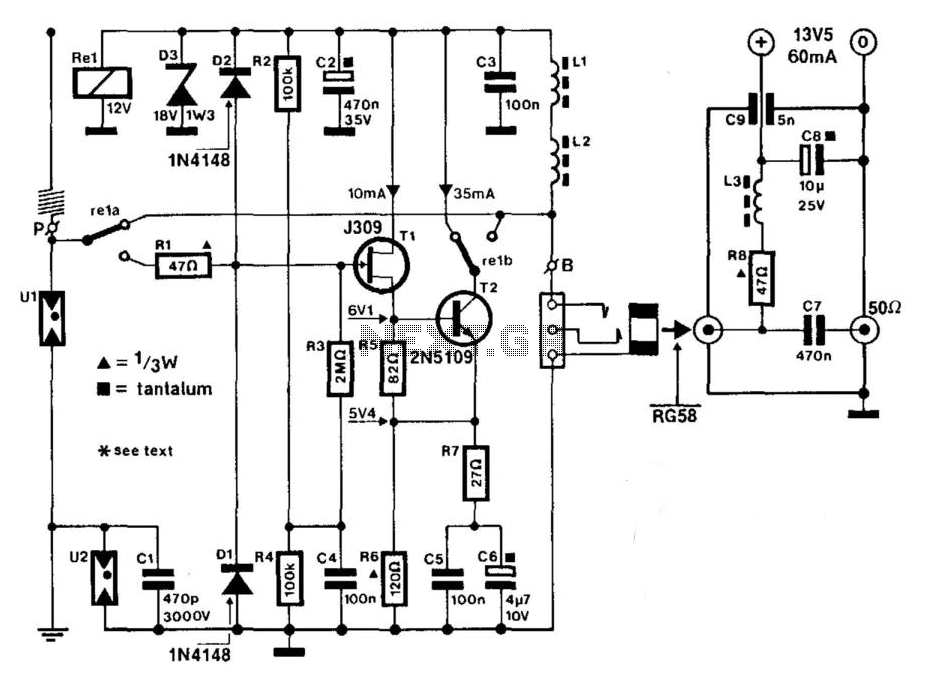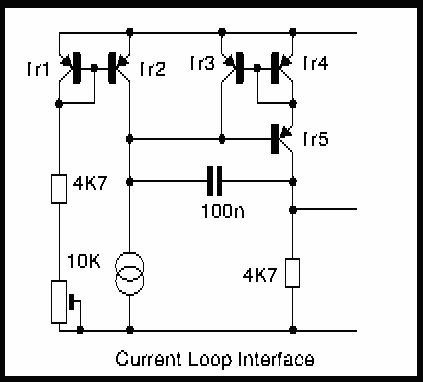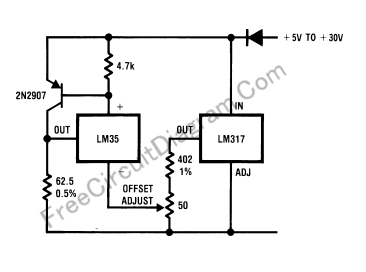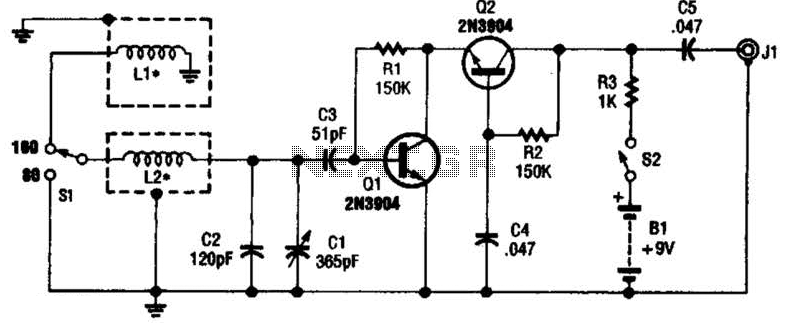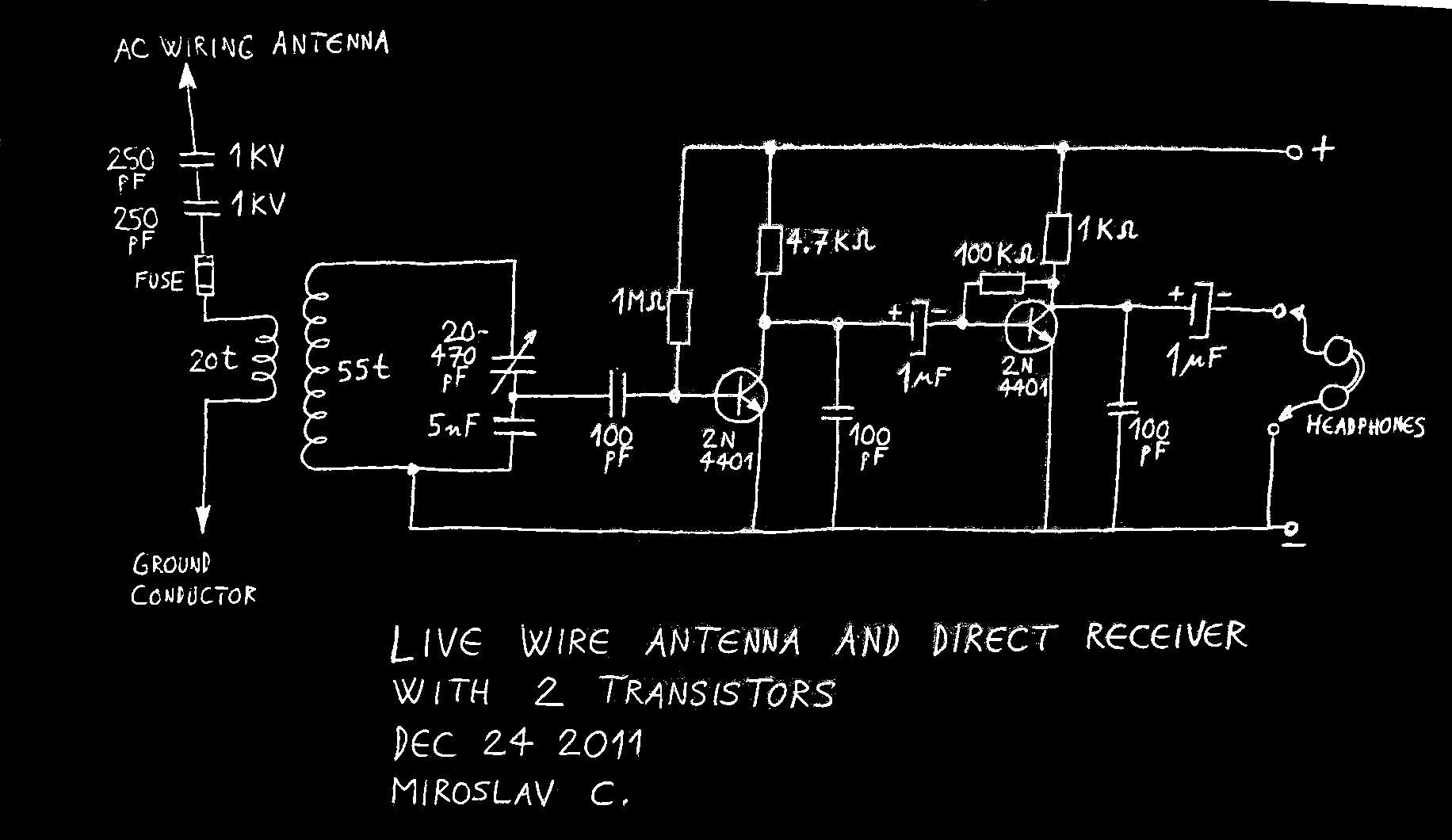
7-MHz Loop Antenna
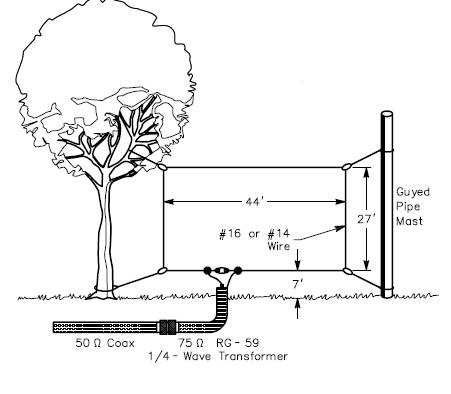
The loop may be fed at the center of one of the vertical sides if vertical polarization is preferred. For horizontal polarization, feeding is necessary at the center of either horizontal side. Optimum directivity occurs at appropriate angles towards the airplane in the loop, or more simply, broadside through the loop. It is advisable to suspend the antenna from market supports to enable it to radiate effectively in a desired direction. The overall length of the wire used in a loop is calculated in feet using the formula 1005/f (MHz). Therefore, for operation at 7.125 MHz, the total wire length will be 141 feet. The matching transformer, which consists of a quarter wavelength of 75-ohm coaxial cable, can be computed by dividing 246 by the operating frequency in MHz, and then multiplying that figure by the velocity factor of the coaxial cable being used. For operation at 7.125 MHz, this calculation yields 246/7.125 MHz = 34.53 feet. If coaxial cable with solid polyethylene insulation is employed, a velocity factor of 0.66 should be used. Foam-polyethylene coax has a velocity factor of 0.80. Assuming RG-59 is used, the length of the matching transformer will be 34.53 ft × 0.66 = 22.79 feet, or 22 feet and 9.5 inches. This same loop antenna may also be utilized for the 14 and 21 MHz bands.
The described loop antenna operates effectively by utilizing specific feeding points for either vertical or horizontal polarization, allowing for adaptability depending on the application. The choice of feeding point directly influences the antenna's directivity and radiation pattern, which is critical for achieving optimal performance. The calculated wire length of 141 feet for the loop at 7.125 MHz ensures resonance at this frequency, facilitating efficient radiation.
The matching transformer plays a vital role in impedance matching between the antenna and the transmission line, minimizing signal loss. The length of the matching transformer is determined based on the operating frequency and the velocity factor of the coaxial cable. The formulas provided facilitate precise calculations to ensure the matching transformer is correctly sized for the specific operating conditions. The use of RG-59 coaxial cable, with its velocity factor of 0.66, is a common choice due to its balance of performance and availability.
Additionally, the loop antenna's design allows for versatility in operation across multiple frequency bands, specifically 14 MHz and 21 MHz. This characteristic enhances its utility in various communication applications, making it a valuable component in amateur radio setups and other RF transmission systems. Proper installation and alignment of the antenna are essential to maximize its performance and achieve the desired radiation characteristics.The loop may be fed inside the center of one of the vertical sides if vertical polarization is preferred. For horizontal polarization, it can be necessary to feed either in the horizontal sides in the center.
Optimum directivity happens at proper angles towards the airplane in the loop, or in much more hassle-free terms, broadside through the loop . One need to try to hang the program from on the market supports which will enable the antenna to radiate the utmost amount in some favored path. The overall length of the wire utilized in a loop is determined in ft in the system 1005/f (MHz). Therefore, for operation at seven. 125 MHz the all round wire length are going to be 141 ft. The matching transformer, an electrical 1/4 G« of 75-G™ coax cable, is often computed by dividing 246 by the operating frequency in MHz, then multiplying that amount by the velocity element from the cable becoming utilised.
Therefore, foroperation at 7. 125 MHz, 246/7. 125 MHz = 34. 53 feet. If coax with reliable polyethylene insulation is employed, a velocity issue of 0. 66 have to be employed. Foam-polyethylene coax features a velocity issue of 0. eighty. Assuming RG-59 is utilised, the length of the matching transformer will become 34. 53 (ft). 0. 66 = 22. 79 feet, or 22 ft, 91/2 inches. This same loop antenna may well be used to the 14 and 21-MHz bands 🔗 External reference
The described loop antenna operates effectively by utilizing specific feeding points for either vertical or horizontal polarization, allowing for adaptability depending on the application. The choice of feeding point directly influences the antenna's directivity and radiation pattern, which is critical for achieving optimal performance. The calculated wire length of 141 feet for the loop at 7.125 MHz ensures resonance at this frequency, facilitating efficient radiation.
The matching transformer plays a vital role in impedance matching between the antenna and the transmission line, minimizing signal loss. The length of the matching transformer is determined based on the operating frequency and the velocity factor of the coaxial cable. The formulas provided facilitate precise calculations to ensure the matching transformer is correctly sized for the specific operating conditions. The use of RG-59 coaxial cable, with its velocity factor of 0.66, is a common choice due to its balance of performance and availability.
Additionally, the loop antenna's design allows for versatility in operation across multiple frequency bands, specifically 14 MHz and 21 MHz. This characteristic enhances its utility in various communication applications, making it a valuable component in amateur radio setups and other RF transmission systems. Proper installation and alignment of the antenna are essential to maximize its performance and achieve the desired radiation characteristics.The loop may be fed inside the center of one of the vertical sides if vertical polarization is preferred. For horizontal polarization, it can be necessary to feed either in the horizontal sides in the center.
Optimum directivity happens at proper angles towards the airplane in the loop, or in much more hassle-free terms, broadside through the loop . One need to try to hang the program from on the market supports which will enable the antenna to radiate the utmost amount in some favored path. The overall length of the wire utilized in a loop is determined in ft in the system 1005/f (MHz). Therefore, for operation at seven. 125 MHz the all round wire length are going to be 141 ft. The matching transformer, an electrical 1/4 G« of 75-G™ coax cable, is often computed by dividing 246 by the operating frequency in MHz, then multiplying that amount by the velocity element from the cable becoming utilised.
Therefore, foroperation at 7. 125 MHz, 246/7. 125 MHz = 34. 53 feet. If coax with reliable polyethylene insulation is employed, a velocity issue of 0. 66 have to be employed. Foam-polyethylene coax features a velocity issue of 0. eighty. Assuming RG-59 is utilised, the length of the matching transformer will become 34. 53 (ft). 0. 66 = 22. 79 feet, or 22 ft, 91/2 inches. This same loop antenna may well be used to the 14 and 21-MHz bands 🔗 External reference
